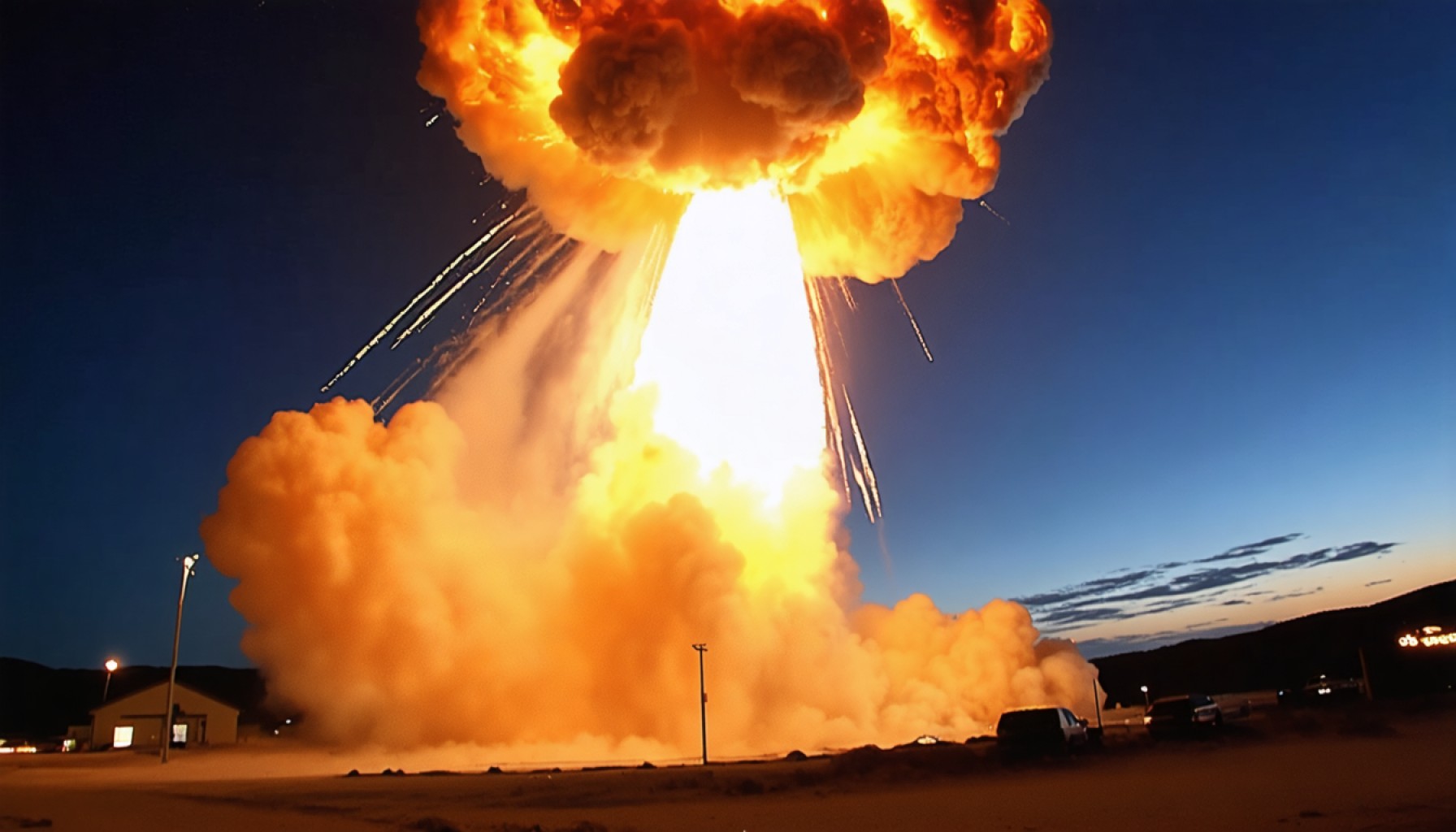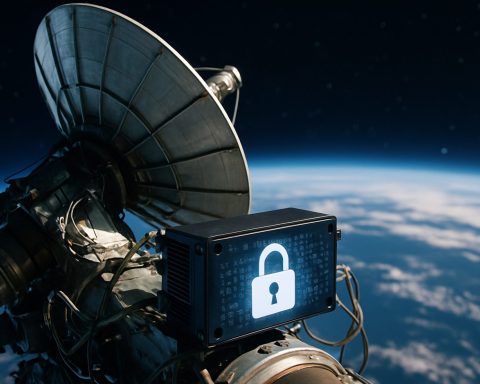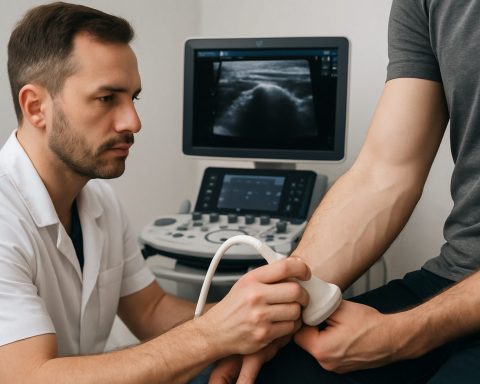- Passengers on a Frontier Airlines flight witnessed SpaceX’s Starship Flight 8 explosion mid-air, capturing viral attention on TikTok.
- The explosion highlighted the tension between aerospace innovation and safety, prompting discussions about improving current protocols.
- Significant disruptions occurred, including temporary ground stops at major Florida airports like Miami and Orlando.
- The test flight from Boca Chica, Texas, was uncrewed, and no injuries were reported despite the mishap.
- The FAA has tasked SpaceX with a detailed investigation to learn and improve from the incident.
- SpaceX remains committed to using each trial to enhance the reliability of their Starship technology and space travel.
- The incident underscores both human ingenuity and the risks of space exploration, advocating for continued innovation and safety improvements.
High above the Earth, where the blue horizon meets the vast blackness of space, a plane full of unsuspecting passengers witnessed an unforgettable spectacle. The fiery end of SpaceX’s Starship Flight 8 unfolded in real-time, an uncanny scene that seemed plucked from the pages of a science fiction thriller.
The dramatic sight, recorded and shared by TikTok user Mariah Davenport, showcased a fiery cascade of debris streaking across the sky—a sight that would soon traverse the digital landscape, amassing millions of views and igniting conversations worldwide. The TikTok video, animated with the vibrant rhythm of “Fireball” by Pitbull, depicted the passengers’ astonishment as they viewed what was, for many, a once-in-a-lifetime experience.
Imagine being catapulted from the idyllic beaches of Punta Cana, only to find your flight unexpectedly turning back due to the surreal proximity of a rocket explosion. This was the reality for Davenport and her boyfriend, whose Frontier Airlines journey from the Dominican Republic to Chicago was abruptly rerouted after encountering SpaceX’s latest test gone awry.
The significance of this airborne event extends beyond social media virality. The explosion prompted severe disruptions, highlighting the delicate balance between aerospace innovation and safety. With temporary ground stops enforced at major Florida airports like Miami and Orlando, the event raised pivotal questions about the adequacy of current safety protocols during such ambitious test flights.
The test flight, which launched from Boca Chica, Texas, ended not with the successful apex of its mission but with a dazzling yet unintended pyrotechnic display. Despite the dramatic imagery and resultant chaos, there’s a silver lining—the mission was uncrewed, and, crucially, no injuries were reported.
In the aftermath, SpaceX has been tasked by the Federal Aviation Administration to conduct a thorough investigation. The company, renowned for pushing the envelope of possibility, reiterated its commitment to learning from mishaps. SpaceX emphasized that each trial, whether triumphant or turbulent, contributes to the eventual perfection of their Starship technology—and ultimately, to the reliability of space travel itself.
The public and the aerospace community now stand at the cusp of potential changes in how future test flights might be conducted. As SpaceX engineers pore over data and the FAA review unfolds, the world waits with bated breath for revelations that could reshape the future of galactic exploration.
In the grand theatre of the skies, where every test flight becomes a ballet of engineering and ambition, this incident stands as both a testament to human ingenuity and a reminder of the inherent risks that accompany such awe-inspiring quests. The key takeaway is clear: as we march towards the stars, every misstep offers a pathway to more profound and safeguarded innovations.
The Truth Behind SpaceX Starship’s Fiery Flight and What It Means for the Future
Inside the Explosive Event
When SpaceX’s Starship Flight 8 met its fiery fate, it wasn’t just an awe-inspiring spectacle for a plane full of passengers—it also highlighted the evolving challenges and imperatives of space innovation and air traffic safety. As social media lit up with the now-famous video posted by TikTok user Mariah Davenport, the event underscored the fine line between aerospace ambition and the rigorous safety measures needed to protect both human and airspace interests.
Why It Matters
1. Aerospace Safety Concerns: The incident reignites discussions about and scrutiny on existing protocols that govern airspace sharing between commercial flights and space missions. Temporary airport ground stops, such as those in Miami and Orlando, expose the potential vulnerabilities in current systems managing these dual environments.
2. Impact on Space Tourism and Industry Trends: As commercial space ventures such as SpaceX accelerate, the industry faces mounting pressure to enhance safety measures that reassure potential customers and international regulators.
3. Continual Learning: SpaceX, under an investigation mandate from the FAA, demonstrates a corporate culture committed to iterative learning. This accident, while stunning, is perceived not as a setback but as a stepping stone toward perfecting Starship technology.
Important Questions Answered
– What Led to the Explosion?
Although precise details await the FAA’s complete investigation, early analyses suggest technical failures in the rocket’s final descent phase, contributing to the unplanned explosion.
– Legal and Regulatory Implications:
Given its responsibilities, the FAA’s scrutiny could lead to updated regulations that might alter how future space flights are scheduled, especially concerning commercial air traffic.
– How Does This Affect Future Missions?
While public confidence might wobble following such incidents, the commitment to refining processes can lead to more robust designs and stringent testing, ultimately enhancing the safety and reliability of future space enterprises.
Actionable Tips and Recommendations
1. Stay Informed: For frequent travelers and aviation enthusiasts, keeping abreast with organizations like the FAA for updates on aerospace safety can provide peace of mind.
2. Social Media as a News Source: Platforms like TikTok and Twitter can be real-time sources for significant events. Follow credible space organizations like SpaceX and the FAA for accurate information.
3. Embrace Innovation: Understanding the complexities of space missions can help frame such incidents as necessary risks taken to achieve greater scientific and exploratory milestones.
As the Aerospace Industry Evolves
The crossroad of regulating burgeoning space traffic with commercial aviation presents both challenges and opportunities. As SpaceX and other companies continue their celestial journeys, the lessons derived from each test flight (successful or otherwise) become invaluable contributions to safer and more effective space exploration. For further insights into cutting-edge aerospace advancements and related regulations, visit the SpaceX website.
With each flight, enthusiasts, scholars, and travelers alike are reminded that we are at the dawn of a new space era, where innovation is boundless, but safety remains paramount. The balance struck between the two will dictate the pace of our ascent among the stars.







